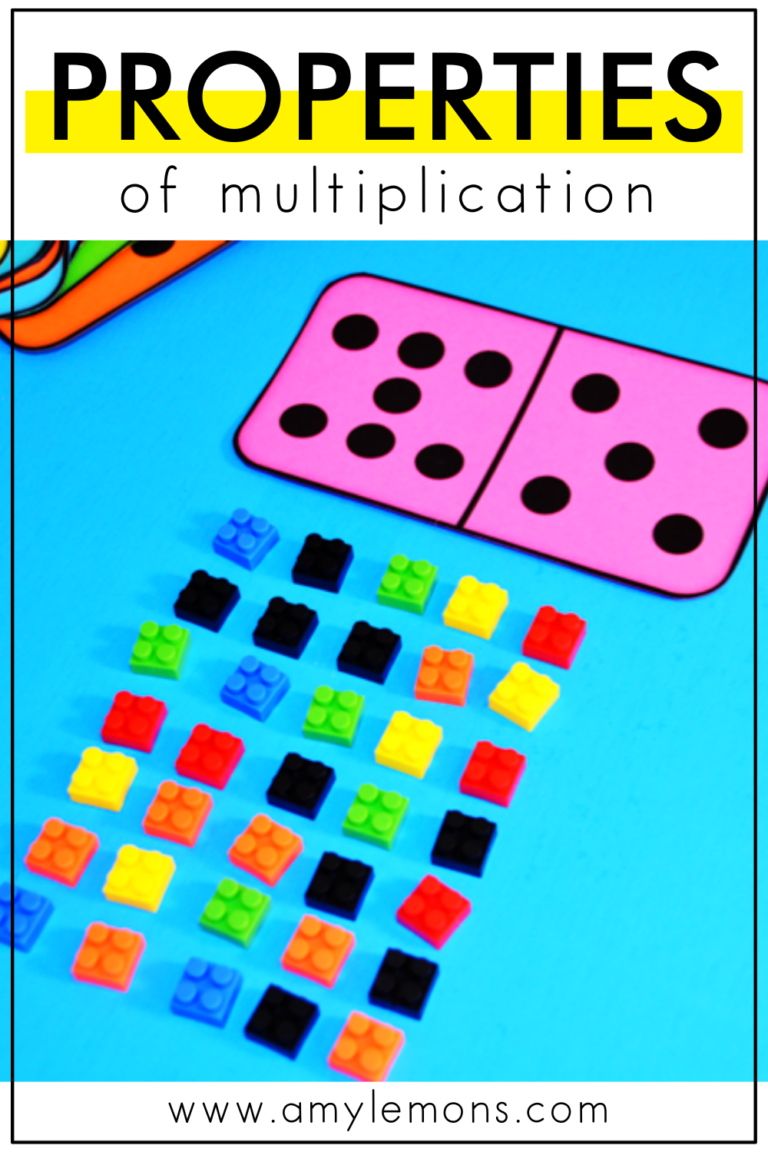
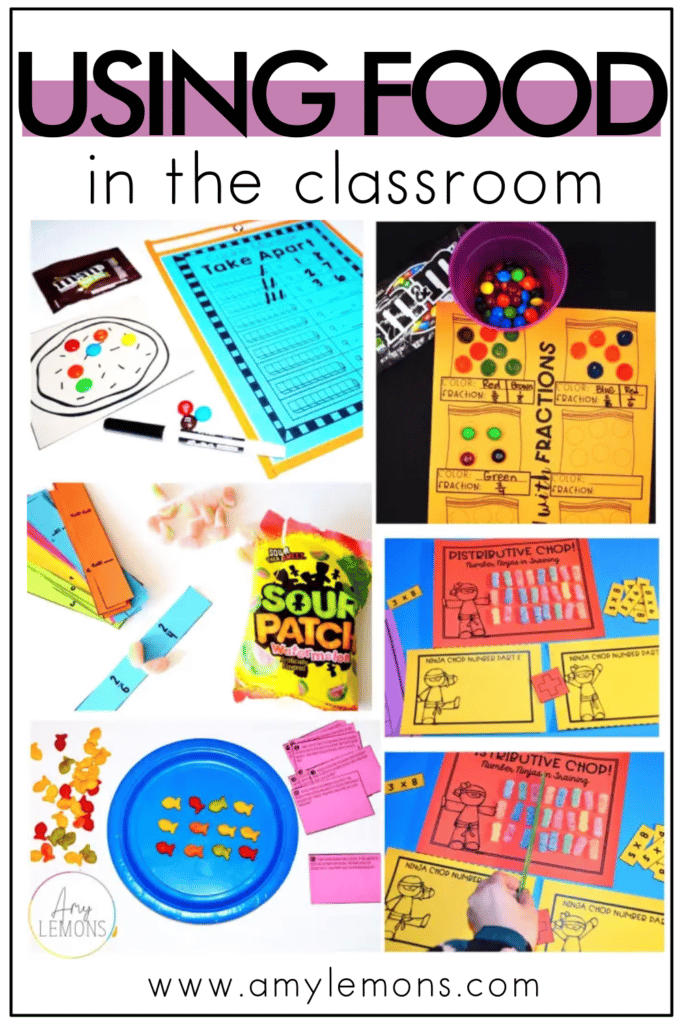
Wow, what a week right?! I know some of my teacher friends have had to abruptly figure out how to teach from a distance, others are navigating still having their school open through uncertainty, and parents are scrambling with taking on having their kids home when they are normally working! Strange times for all for sure, and I’m speaking from experience because I just REALLY didn’t realize how hungry my kids are ALL. THE. TIME. Ha!
If we’re going to be giving out snacks every five minutes, we might as well put them to good use! Before your students and/or kids devour all the crackers and fruit snacks, MAKE THEM WORK FOR IT with these fun math activities using yummy food items.
I’ve rounded up some of my favorite activities that use food to solve math problems in the classroom (or home!). I have always been an advocate for using snacks in a learning environment with kids and trust me, students cooperate so much better when they know their cooperation equals snacks!
Occupied learners AND full bellies?! I think that’s a total win-win.
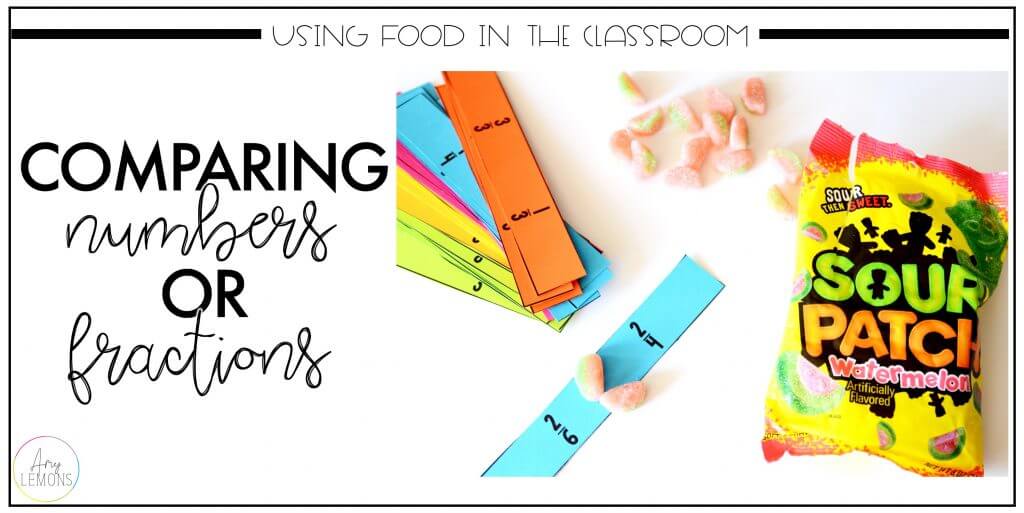
Have you ever played a game of Kaboom? Well, here’s a little twist on the game using fractions and candy that I’m sure your students will love. Here’s how it works: Comparing fraction strips are placed into a container. Students draw a strip. They use their watermelon candy pieces to compare the fractions. If they do it correctly (partners must agree), they keep that strip. BUT, if they pull out a KABOOM strip… ALL playing cards must go back! The student with the most playing cards at the end is the winner.
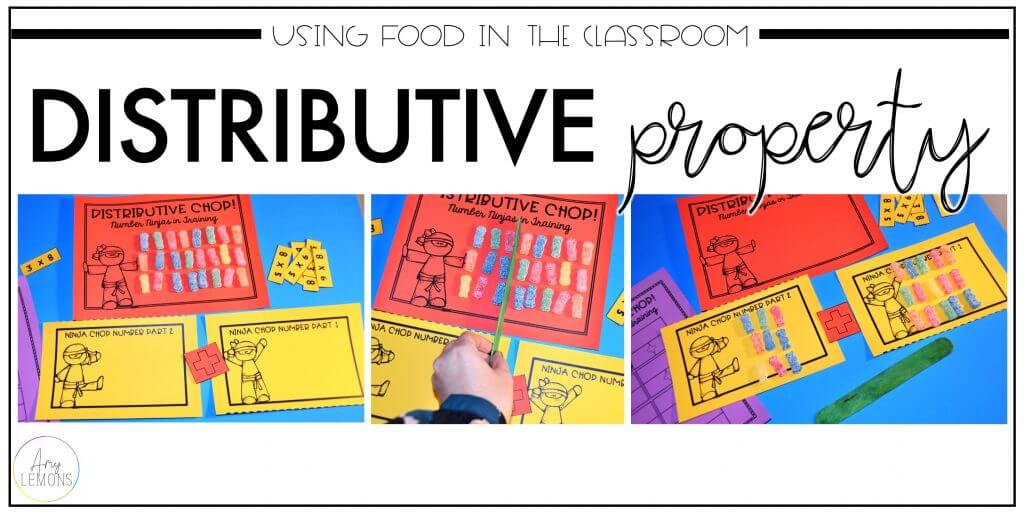
The Distributive Property can be tricky, but it doesn’t have to be! Have students play The Distributive Chop! First, students build the multiplication equation with an array of CANDY! You could use any type of small candy or cracker. Once the array has been built, students CHOP the larger array into two smaller arrays using a popsicle stick. Now students rewrite the two equations (one for each array) and solve. This demonstrates that the beginning equation can be broken down into two equations to find the product by using the distributive property.
Whoa, that was a mouthful. But stick with me, I’ve got a few more activities to show you!
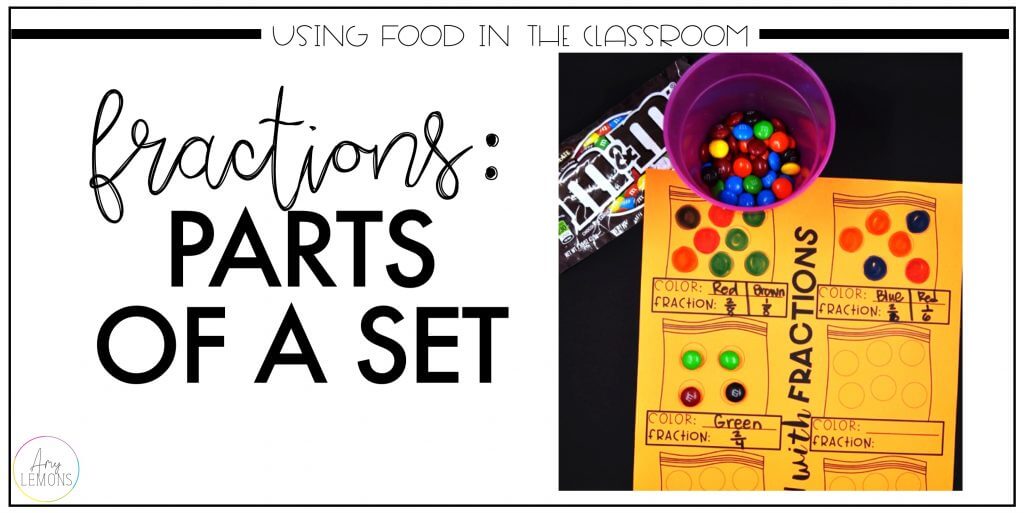
M&Ms are just the holy grail of classroom snacks for incorporating into lesson plans! The varying colors make them perfect for identifying parts of a set. For this activity, each student needs at least 8 M&Ms, but more would be better! (You know, in case they eat them before you can even start the instruction. It happens. Trust me.)
Students put those into a paper sack or small cup. First, students look at their recording sheet to see how many M&Ms they need for that round. Without looking, that’s how many M&Ms the students take out of the cup. Students look at their arrangement and color the recording sheet to match. Students choose one of the colors to match a fraction with. If they have two brown, four red, and two yellow, they may choose red. Students would write RED = 4/8. Easier done than said, but you get it!

One of the most simple ways to use food in the classroom is by replacing counters with food. This instantly gets students more engaged in the instruction or activity. Why? Because they want to know how many pieces they will have to eat! Here students are solving division word problems with goldfish. They could do this exact same thing with cubes, but the goldfish add an exciting element! And let’s face it, goldfish are delicious.

For this activity from my 1st grade Magic of Math unit, students are working on subtracting from 9 with some scrumptious looking “cookies” with sprinkles. You can use any type of small candy for the sprinkles, but again, I chose M&Ms because they’re just so dang yummy! To start, students should have 9 “sprinkles” on their cookie. Each time they work to take apart 9 by removing sprinkles from the cookie. As they are completing subtraction, they are also modeling this on their work-mat by showing their subtraction model and equation. This allows students to use one-to-one correspondence while also completing the model and equation.
These are only a fraction of the many ways food can be incorporated into your classroom activities. If you have any other ideas to share, let me know in the comments. I love hearing all about new ways to use an oldie but goodie idea for class instruction!
P.S., Is it lunch time, yet?! For some reason, I am suddenly starving.
Don’t want to forget about these ideas for using food in the classroom? Pin the image below to save for later!

\

Hey, y’all! My name is Amy Lemons and I am passionate about providing students with both engaging and effective standards-based Math and ELA lessons.
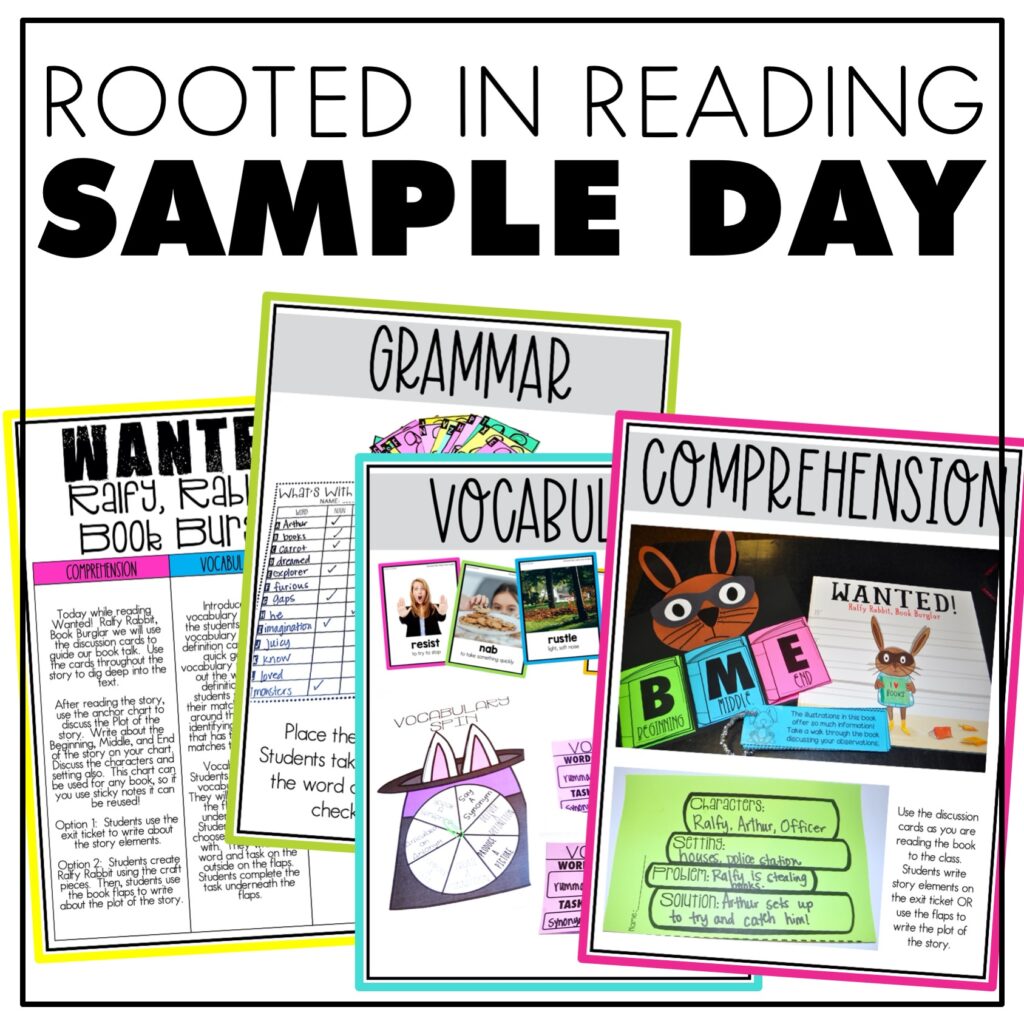
Sample a day of Rooted in Reading with these lesson plans and activities for Reading Comprehension, Vocabulary, and Grammar!


